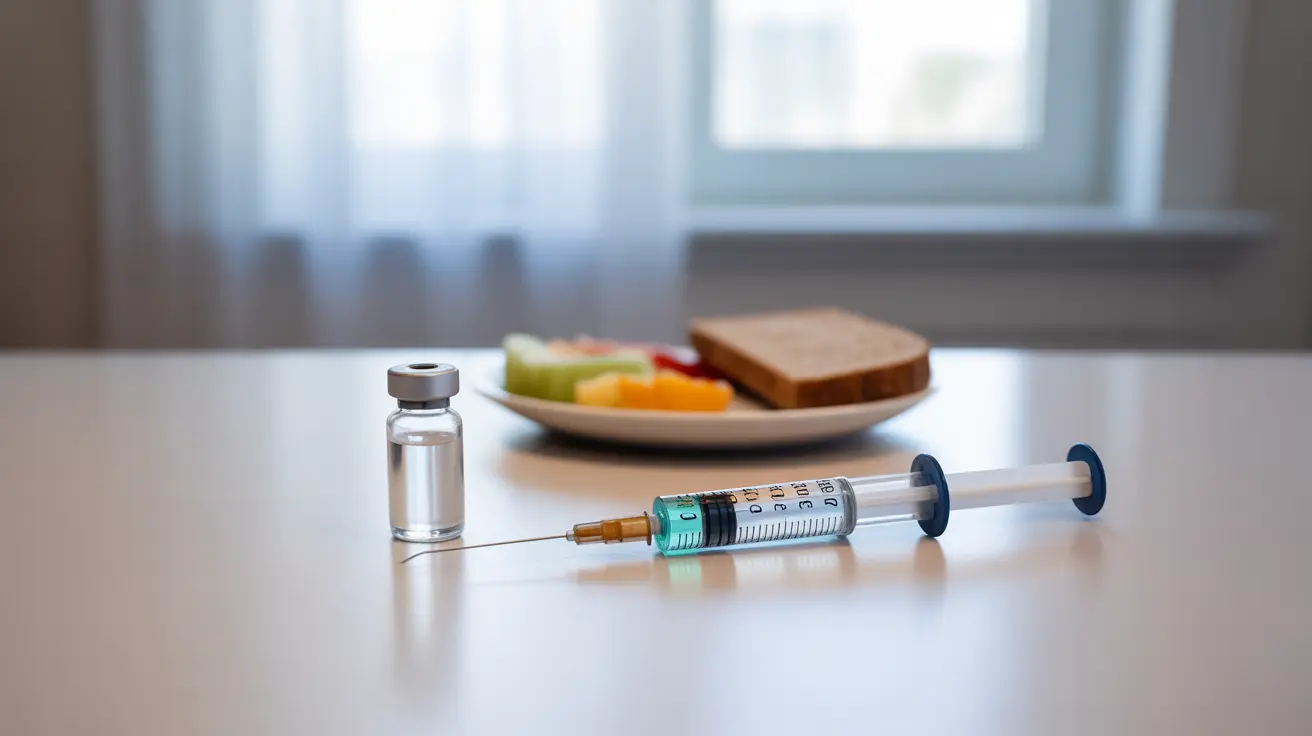Managing insulin timing with meals is a crucial aspect of diabetes care that directly impacts blood sugar control. While healthcare providers typically recommend taking mealtime insulin before eating, understanding what happens if you take insulin after food is important for everyone who uses insulin therapy.
This comprehensive guide explores the effects of post-meal insulin administration, proper timing strategies, and what to do if you miss your pre-meal dose. Whether you're new to insulin therapy or looking to optimize your diabetes management, this information will help you make informed decisions about your treatment.
The Impact of Delayed Insulin Administration
When you take insulin after eating instead of before, several important physiological changes occur that can affect your blood sugar management:
- Food begins raising blood sugar levels immediately after eating
- Without pre-meal insulin, there's no immediate hormone response to handle incoming glucose
- Blood sugar levels may spike higher than usual before the delayed insulin begins working
- It may take longer to return to target blood sugar ranges
This delayed insulin response can lead to temporary high blood sugar (hyperglycemia) and may require adjustments to your diabetes management strategy.
Timing Matters: Understanding the Insulin-Meal Connection
How Pre-Meal Insulin Works
Mealtime insulin is designed to work in harmony with your food intake. When taken 15-30 minutes before eating, insulin begins working as glucose enters your bloodstream from digested food. This timing helps:
- Prevent significant blood sugar spikes
- Match insulin action to food absorption
- Maintain more stable blood glucose levels
- Reduce the risk of diabetes complications
The Science Behind Post-Meal Insulin
Taking insulin after eating creates a mismatch between glucose absorption and insulin action. Your body must work harder to bring down elevated blood sugar levels, which can lead to:
- More pronounced blood sugar fluctuations
- Increased risk of post-meal hyperglycemia
- Greater difficulty achieving target blood sugar ranges
- Potential strain on your body's regulatory systems
Managing Missed Insulin Doses
If you accidentally forget to take your insulin before eating, don't panic. Here are the steps to take:
- Check your current blood sugar level
- Take your prescribed insulin dose as soon as you remember
- Monitor your blood sugar more frequently for the next few hours
- Document the incident and response for future reference
- Discuss the situation with your healthcare provider
Strategies for Optimal Insulin Timing
Developing good habits for insulin administration can help prevent timing issues. Consider these practical tips:
- Set meal-time reminders on your phone
- Keep insulin supplies easily accessible
- Establish a pre-meal routine
- Plan meals ahead when possible
- Monitor patterns in your blood sugar responses
Frequently Asked Questions
What happens to blood sugar if insulin is taken after eating instead of before?
When insulin is taken after eating, blood sugar levels typically rise higher than usual because there's a delay in the hormone's action. This can lead to temporary hyperglycemia before the insulin begins working to lower blood glucose levels.
How important is the timing of mealtime insulin for managing type 2 diabetes?
Timing is very important for effective diabetes management. Taking insulin 15-30 minutes before meals helps prevent blood sugar spikes and maintains better overall glucose control. Consistent timing can lead to more predictable results and better long-term health outcomes.
Can taking insulin late increase the risk of high blood sugar or diabetes complications?
Yes, regularly taking insulin after meals instead of before can lead to more frequent high blood sugar episodes. Over time, these blood sugar fluctuations may increase the risk of diabetes-related complications if they become a pattern.
What should I do if I forget to take my insulin before a meal?
If you forget your pre-meal insulin, take it as soon as you remember. Check your blood sugar, take your prescribed dose, and monitor your levels more frequently for the next few hours. Contact your healthcare provider if you're unsure about proper adjustment procedures.
How can I best coordinate insulin doses with meal times to control blood sugar spikes?
Establish a routine of checking blood sugar and taking insulin 15-30 minutes before eating. Use reminders, keep supplies readily available, and plan meals when possible. Work with your healthcare team to develop a timing strategy that fits your lifestyle and schedule.




